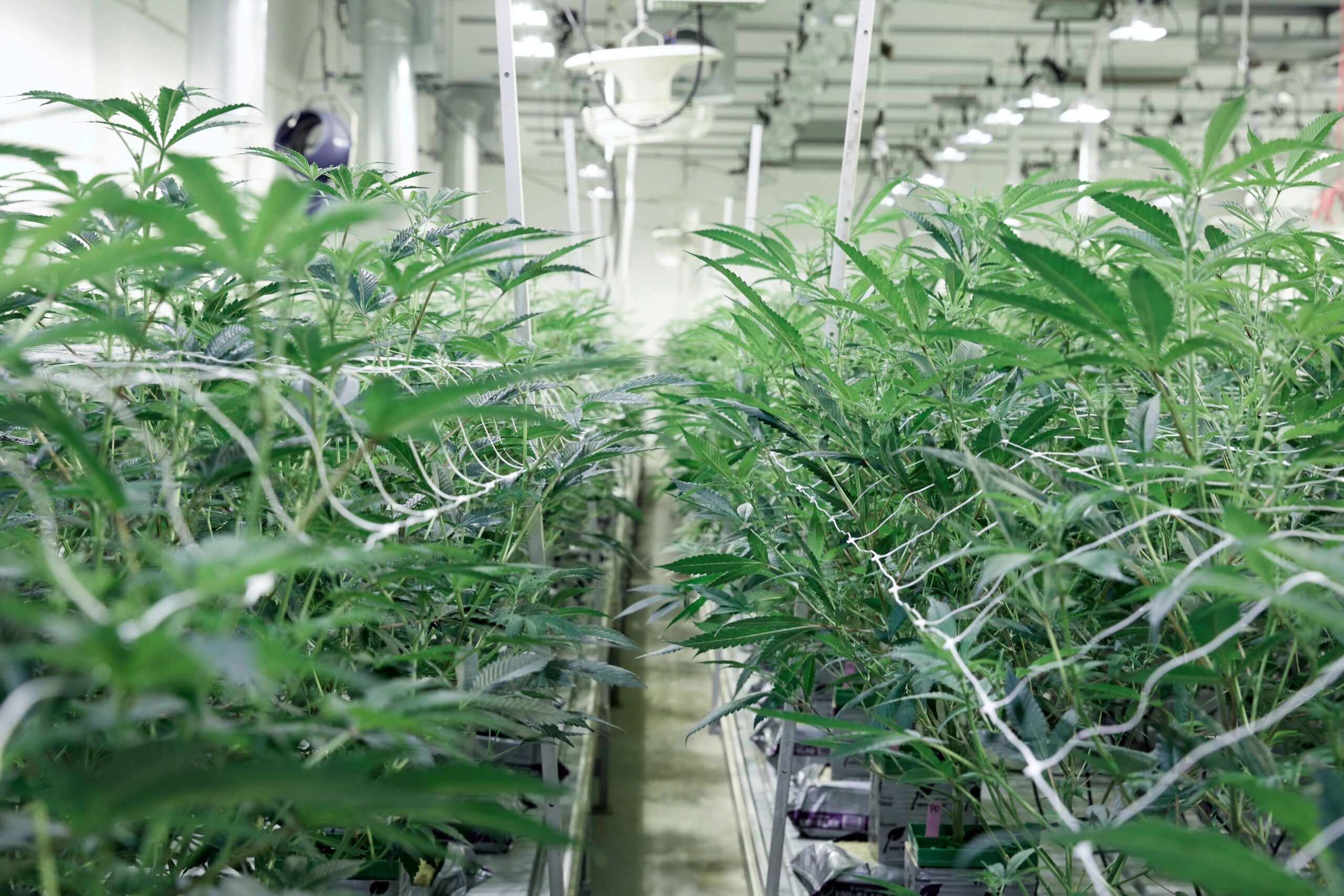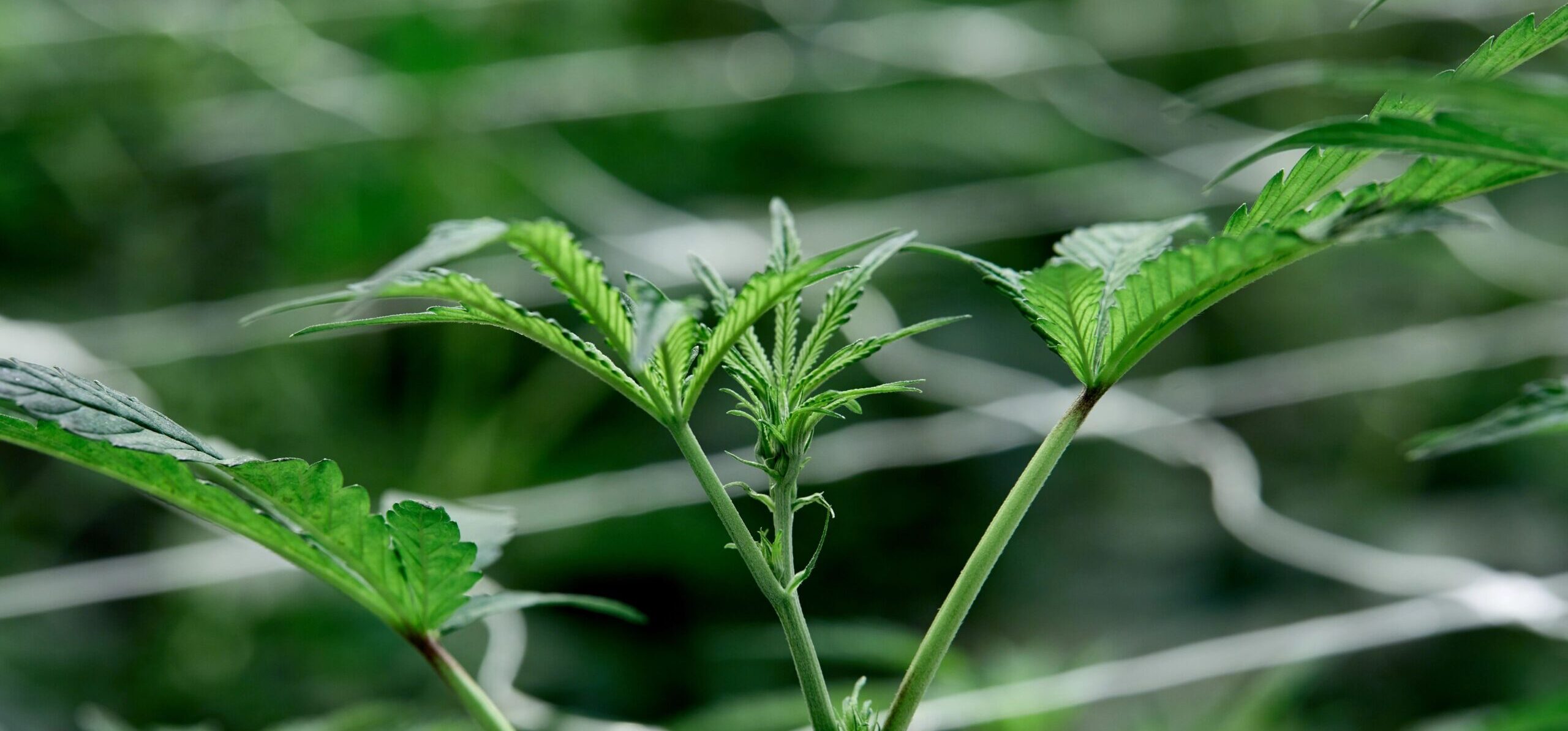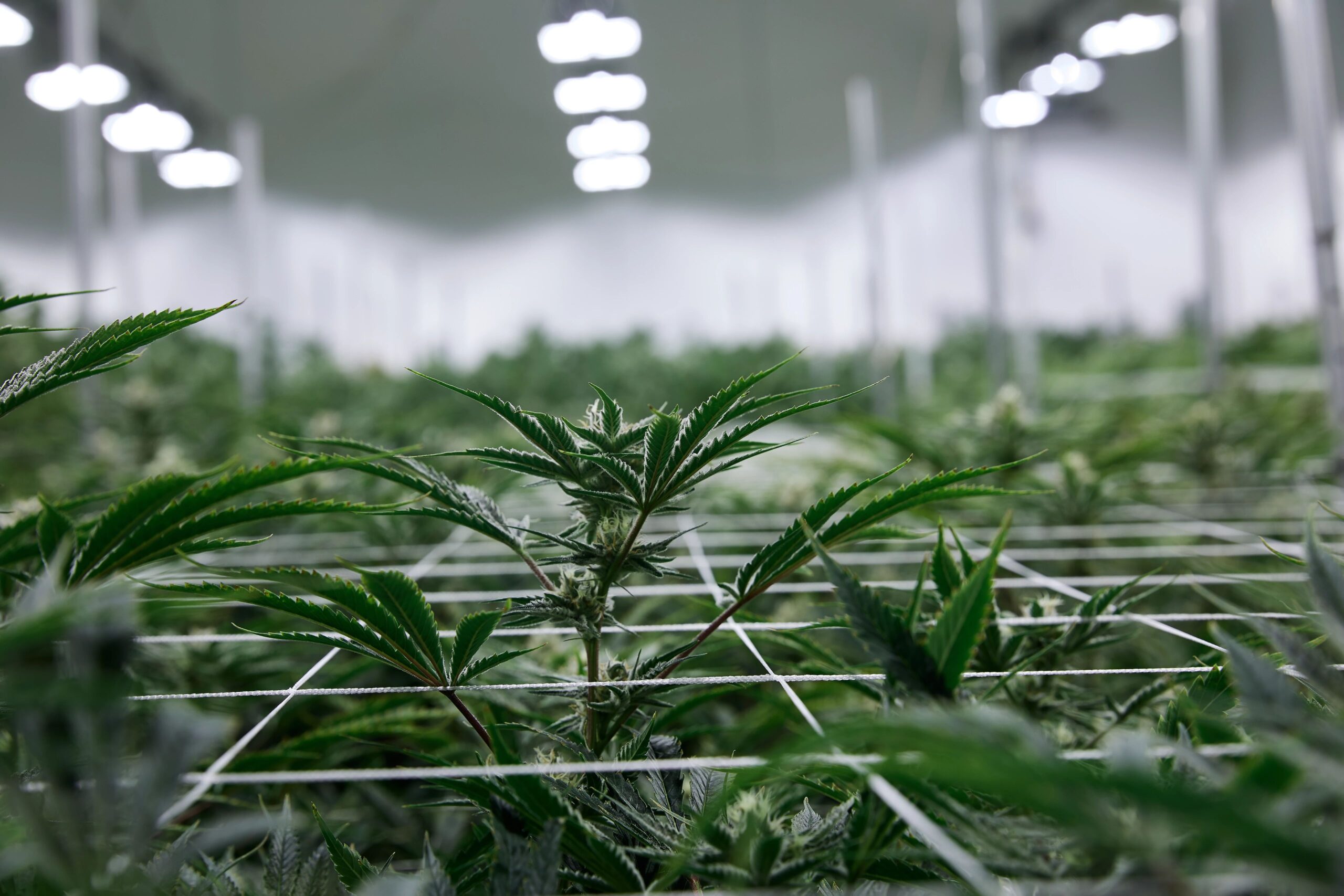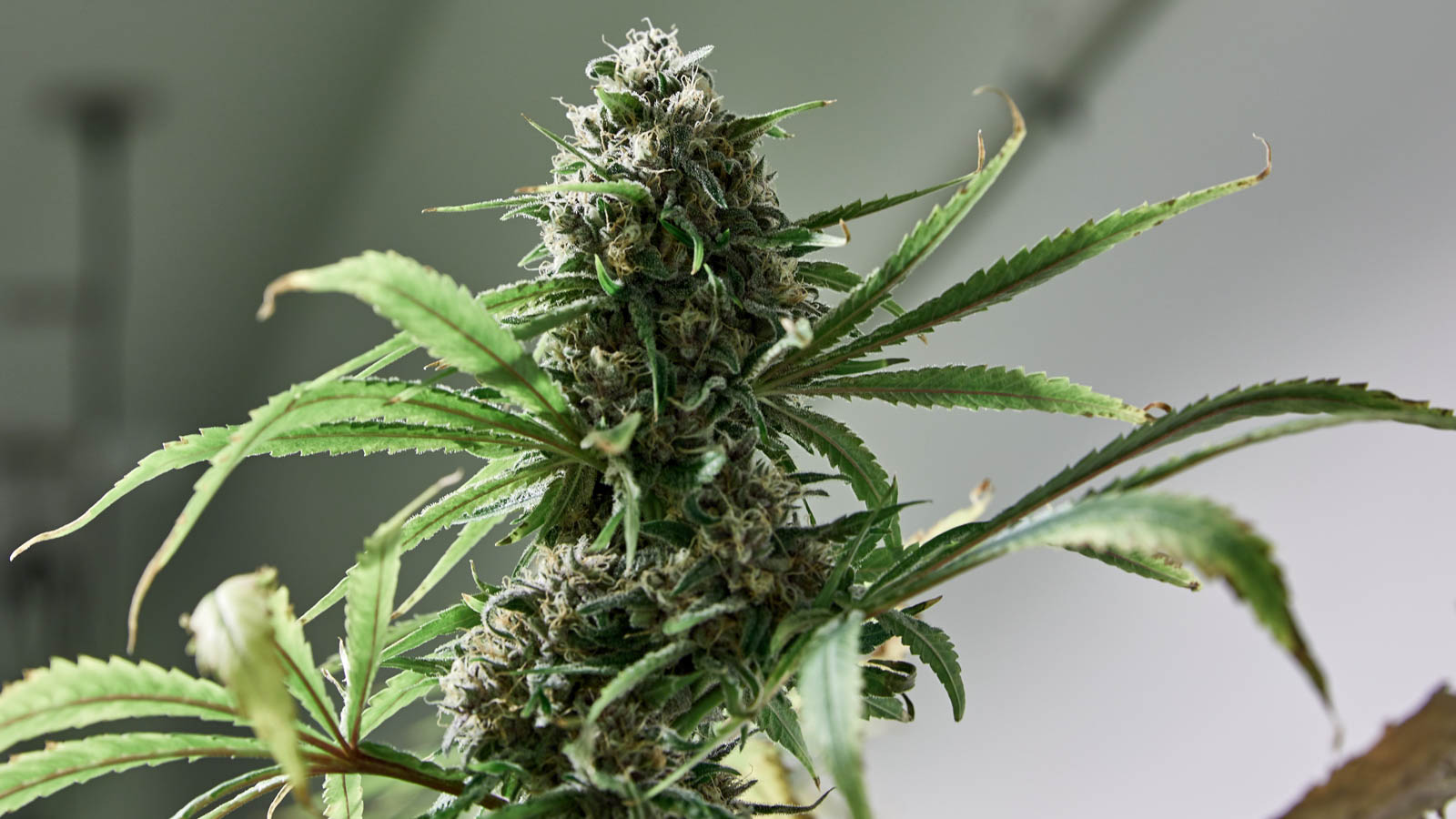When cultivating weed indoors, it's essential to do so as efficiently as possible. Indoor crops often work with limited grow space, and the added expense of artificial light compels growers to maximize their resources. Cultivators face this challenge with every crop: how do you make the best use of limited space and ensure every plant gets as much light as it needs?
Necessity is the mother of invention. As growers moved indoors in the 1980s and 90s, they began to experiment with techniques that would maximize yields with limited resources. One such technique surpassed the rest and spread through the cultivation community over the years: the Sea of Green method.
What is the Sea of Green method?
The Sea of Green method, also known as SOG, is a low-stress training technique where many small cannabis plants can grow at once, as opposed to a few larger plants. Sea of Green plays on the idea that if plants in a small space are forced into their flowering phase early, they only need to grow to half their size to support cola development. The small plants flower in less time and take up less space — a win-win situation.
“A simple technique that focuses on cultivating many smaller plants within a limited space, the Sea of Green growing technique offers a mix of function and convenience," said Landra DeLoach, CEO of Rocket Seeds. The method clusters many plants together in tight quarters under grow lights, typically 1 - 2 plants per square foot. As the plants grow together, they develop a canopy of buds under the light, creating the so-called "sea of green."
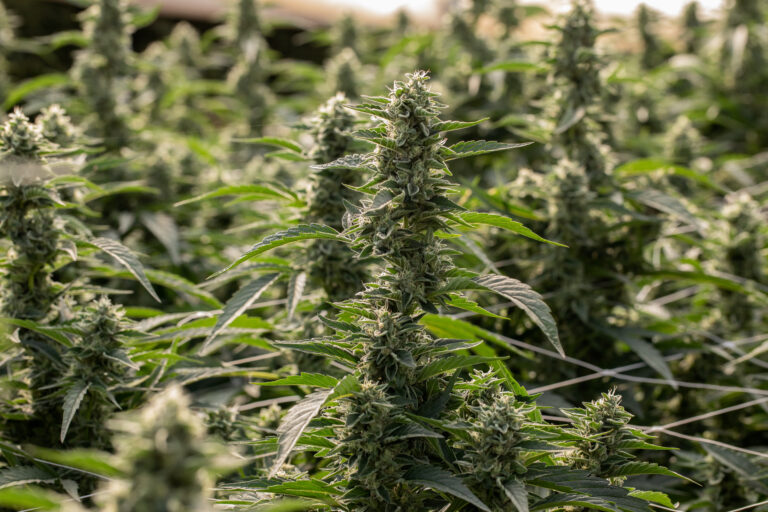 Photo by: Gina Coleman/Weedmaps
Photo by: Gina Coleman/WeedmapsImage lightbox

“The plants are vegged for a short duration, typically about two weeks, before being placed in flower rooms," said James Bowersox, an experienced legacy cultivator and business consultant. In a dense canopy where plants are competing for light, they are encouraged to focus energy on producing one main cola.
“It's important to understand the pruning required for Sea of Green plants, as growing the lower branches may result in smaller, lower-value buds. Proper pruning ensures that the plant's energy is focused on the top colas." Yield per plant is typically lower than when using other training techniques, but yield per square foot is higher. “This method helps maximize yield and make efficient use of space in the grow area," said Bowersox.
Pros and cons of SOG
Whether you're a commercial grower who is trying to optimize the number of harvests for your facility or a home grower who wants to maximize yield in a small space, the Sea of Green method offers a variety of benefits.
Pros
- Short veg periods lead to faster crop cycles
- Improves total yield in small spaces
- Well-suited to generally smaller and shorter indica plants
- Smaller plants are easier to harvest
Sea of Green is not without its challenges, however. “It is a more advanced method, and the small plant and container size leaves little room for error," explained Bowersox. “Issues such as pH fluctuations, under-watering, and Integrated Pest Management (IPM) are critical, and any mistakes could have a significant impact on the plants' health and yields."
Cons
- Requires tight environmental controls and regular monitoring to maintain plant health
- An outbreak of pests or disease can be harder to spot and more challenging to contain
- Can be challenging to reach individual plants, with general maintenance such as watering and pruning requiring more time and care
- Requires a higher investment in clones or seeds
- Not all strains are suitable for SOG
How to use the Sea of Green method
If you're interested in trying the SOG method for growing cannabis, here are the high-level steps to get you started.
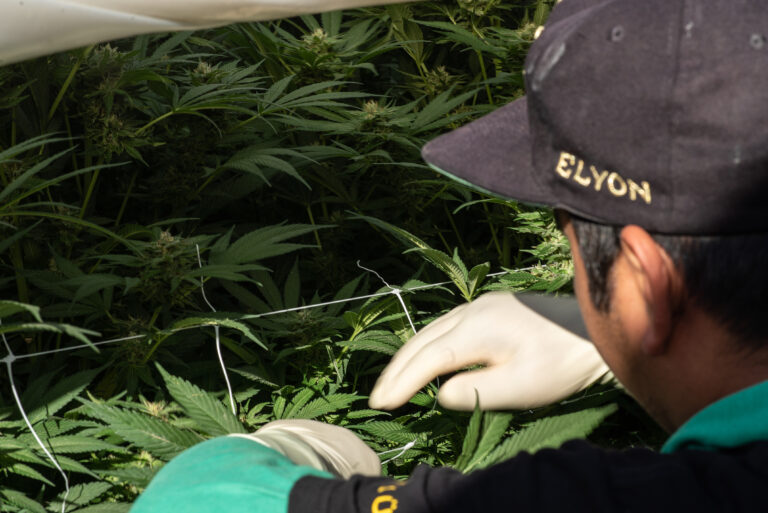 Photo by: Gina Coleman/Weedmaps
Photo by: Gina Coleman/WeedmapsImage lightbox

Step 1: Plan for your space
Do some calculations as to the number of plants and size of pot you could accommodate in your grow room. Most SOG growers aim for 1 - 2 plants per square foot (or 9 - 16 plants per square meter) of space.
Step 2: Source plants
Either germinate seeds or obtain cuttings of other plants to create clones. Growers often use clones for a SOG crop because you can better ensure the plants will all be about the same size and height, all conditions being equal, which is important for developing that even “sea of green" canopy.
Step 3: Ensure you have proper light
Ideally, lighting should reach all four corners of the grow space. LED bar systems are well-suited to SOG grows since they can provide an even photosynthetic photon flux density (PPFD) from corner to corner of the grow room while creating less heat than some other lighting options — but there are many ways to properly light a SOG setup.
Step 4: Pack the plants into the grow space
Set up plants in the grow space, and start them off with an 18-hour light / 6-hour dark cycle for the duration of your veg period.
Step 5: Decide when to begin bloom
Clones may need time to fully root before being forced to bloom. With plants from feminized seeds, bloom can begin immediately or within a week or so of germination. Plants are often switched to bloom when they reach between 6 - 10" in height, depending on the grower's preference. When it's time to flower, switch to a 12-hour light / 12-hour dark cycle to force the plants into bloom.
Step 6: Carefully maintain your grow
Monitor plants closely for deficiencies, pests, or disease outbreaks and avoid major fluctuations in the environment. Once the canopy has been filled out, prune away side branches that are under the canopy and not receiving light. Not only does this improve airflow in the grow room, but it focuses the plants' energy on the main cola.
Step 7: Harvest plants
Once plants are ready, it's time for harvest. While there are more plants than the average crop when using SOG, each plant is relatively easier to harvest since they are smaller with one main stem to trim.
Tips and tricks for a successful SOG
If you're new to SOG growing, here are a few professional tips and tricks to support your grow:
- Plan for success. From planning to optimize yields for your specific grow room dimensions or planning for a mother room if you intend to propagate your own clones, “Sea of Green requires precise planning," said Bowersox.
- Choose the right strains. Sea of Green favors plants that stay relatively short and have relatively short flowering cycles. Indica and many indica-dominant hybrids will have these traits, so research any strain you're interested in growing with SOG.
- Balance is everything. “Understanding plant density is critical: too few plants result in low yields, as do too many," shared Bowersox. Finding the right balance between density, yield, and plant health is an important part of becoming proficient with SOG.
- Keep tight control of the environment and medium. Small plants may be more prone to fluctuations in the growing medium's pH, while drastic fluctuations in temperature or humidity can encourage pests or diseases to develop. “You have to be on point with your Integrated Pest Management (IPM), watering, and pruning," advised Bowersox. “The smaller plant size makes the plants less resilient."
FAQ
How long should I veg for best yield?
It all depends on the resources you have to work with and how much time you have to produce your crop. Most growers will veg for four to six weeks or when their plants reach 10 inches in height. Some cultivators switch to the flowering light regimen when the plants are only about six inches tall or two to three weeks into their growth.
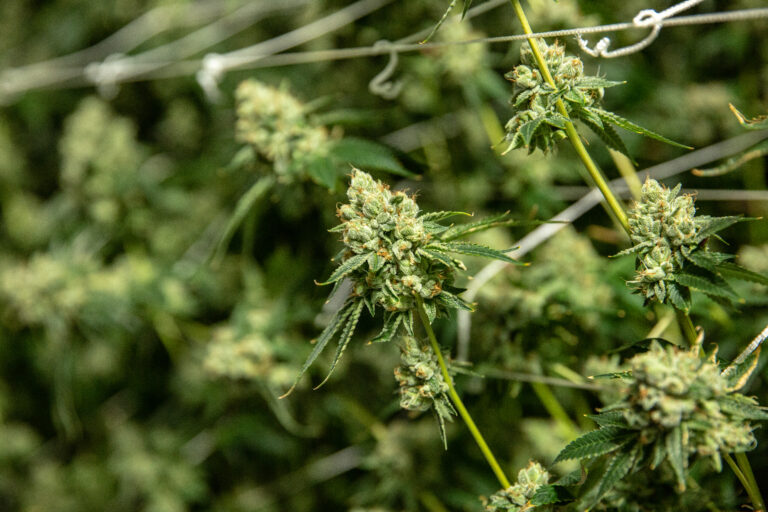 Photo by: Gina Coleman/Weedmaps
Photo by: Gina Coleman/WeedmapsImage lightbox

Other SOG method growers who can invest in larger pots and don't need to cram as many plants per square foot can allow for more extended vegging states, up to seven or eight weeks. The larger pots provide more room for roots to spread. Adjust based on your growing situation, space, and the strain you're cultivating, and know that practice makes perfect. Successful SOG is all about finding the ideal balance between yield, growing conditions, and fast harvest time.
Do clones flower faster than seeds?
The SOG method is especially useful when working with clones. A clone is a cutting from an adult cannabis plant that can be replanted and produce buds. Clones save you the trouble of popping male seeds on accident or obtaining a cultivar of poor quality. And while clones face many of their own issues when it comes to successful replanting, they do flower faster than their seed counterparts.
Clones reach maturity more quickly because they're further along in their development than a cannabis seed yet to pop. Clones also guarantee identical plants in your SOG spread, helping ensure your canopy is the same height and produces the same flowers.
However, it's essential to understand that flowering time varies from cultivar to cultivar. Each variety of cannabis may take more or less time to flower, regardless of the SOG method, and not every strain is viable for using SOG. Indicas generally perform better than sativas, as they naturally have faster flowering cycles and develop shorter plants. Know what strain you're growing and its average flowering time to ensure a thriving SOG canopy of buds.
Can you use SOG outdoors?
Sea of Green requires specific environmental controls over space and light that would be hard to replicate outdoors, and it's a training technique that was mainly developed for indoor growing. “The main advantage of this technique is maximizing space efficiency in indoor grow operations, where space is often limited," said Bowersox.
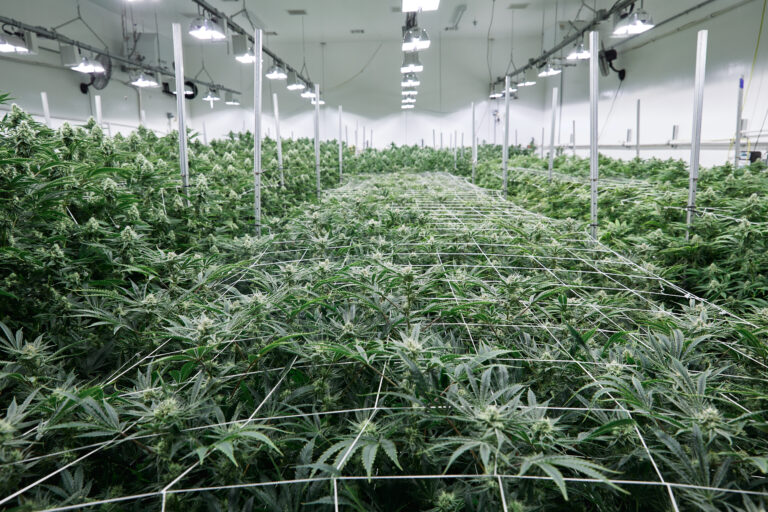 Photo by: Gina Coleman/Weedmaps
Photo by: Gina Coleman/WeedmapsImage lightbox

Outdoor grows typically have more space available, and growers can allow plants to grow larger and take advantage of the natural sunlight. “While it's technically possible to use the Sea of Green method outdoors, it's generally not considered beneficial."
Can you use SOG in a hydroponic grow?
Combining Sea of Green training techniques with a hydroponic growing setup can be complementary in several ways. “The small container sizes used in Sea of Green work well with hydroponic systems, as they allow for frequent watering and nutrient delivery to the plants," said Bowersox. Both SOG and hydroponics can allow for an efficient use of space and resources, working together to improve yields. “Keep in mind that hydroponics, when done properly, grows plants quickly and efficiently — which is the goal of the Sea of Green method as well," said DeLoach.
How much does a plant yield with Sea of Green?
A SOG yield per plant depends on the number and types of plants you cultivate. During the flowering phase, a SOG-grown cannabis plant will develop a single large cola at the top. These plants require little training to develop their buds aside from typical plant upkeep. While these smaller plants may not develop as many colas as a 10-foot-tall sativa, you can grow many more plants in a smaller space and produce similar yields with SOG.
A healthy grow space is a must for ideal yields. SOG plants require the correct pot size, type of light, water pH, nutrients, soil types, environmental conditions, and other growth factors. Cultivators who dial in their formulas can tease maximum yields per square foot out of their SOG crops.
What is the best strain for SOG?
Sea of Green works best with plants that produce fewer lateral (side) branches and produce one dominant cola. Indica and indica-dominant hybrids often exhibit these traits, but any strain can be grown in a SOG setup. Strains like GG4, White Widow, and Northern Lights have been reported to work well with SOG.
Is the Sea of Green a good method for cannabis?
There are many good cultivation techniques and training methods for cannabis. Sea of green can be a very useful training technique for growers who are working with limited space and/or want to increase the number of crops they are able to grow in a given timeframe. When working with a properly equipped grow space and the right genetics, SOG can be a very effective way of maximizing yields per square foot.
Written by Lauren Wilson | Featured image by Gina Coleman

